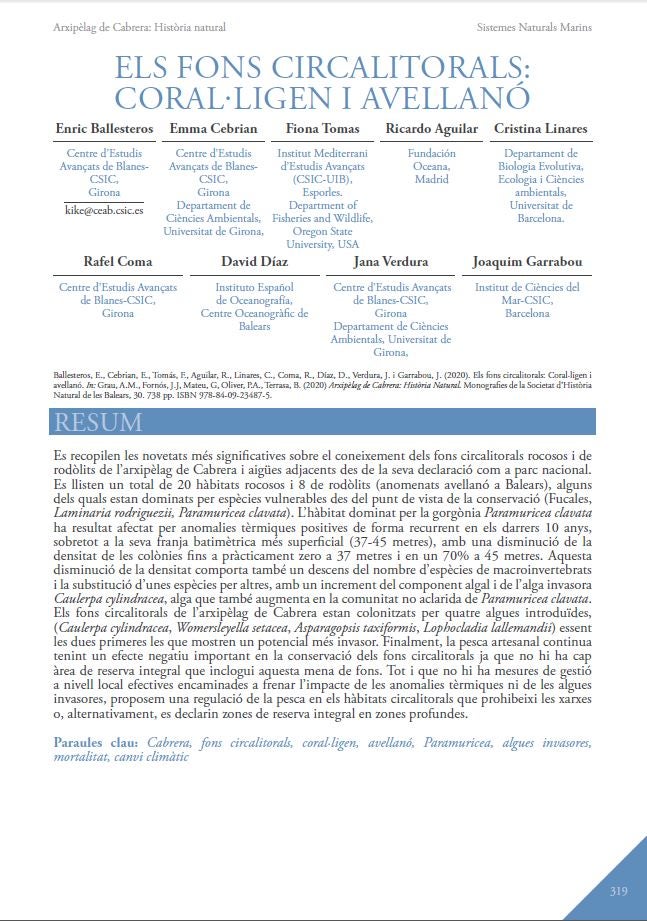Report | junio 1, 2020
Els fons circalitorals: coral·ligen i avellanó
Abstract
Here we summarize the new data on the knowledge of circalittoral rocky bottoms and rhodolith beds of the Archipelago of Cabrera and surrounding waters since its declaration as a National Park. We list a total of 20 rocky and 8 rhodolith habitats, some of them dominated by vulnerable species regarding their conservation status (Fucales, Laminaria rodriguezii, Paramuricea clavata). The habitat dominated by the soft coral Paramuricea clavata has been recurrently affected by positive thermal anomalies since 2007, mainly at the upper limit of its distribution (37 to 45 meters depth), with a decrease of colony density to practically zero at 35 meters and a 70% reduction at 45 meters. Such decrease has been followed by a decrease in the number of invertebrate species as well as the replacement of some species by others. Indeed, there has been an important increase of algae and, in particular, of the invasive species Caulerpa cylindracea, which has also increased in areas where the density of Paramuricea has remained constant. The circalittoral bottoms of Cabrera are colonized by four species of alien macroalgae (Caulerpa cylindracea, Womersleyella setacea, Asparagopsis taxiformis, Lophocladia lallemandii), the first two behaving as invasive. Finally, artisanal fisheries still have a negative impact in the conservation of circalittoral bottoms as there is no circalittoral area were fishing is completely forbidden. Even though there are no effective local management measures to avoid the impact of thermal anomalies or the arrival and colonization by invasive species we propose some type of trammel net fishing regulation/prohibition in all the National Park or the declaration of some no take areas in circalittoral bottom areas to improve their conservation.


